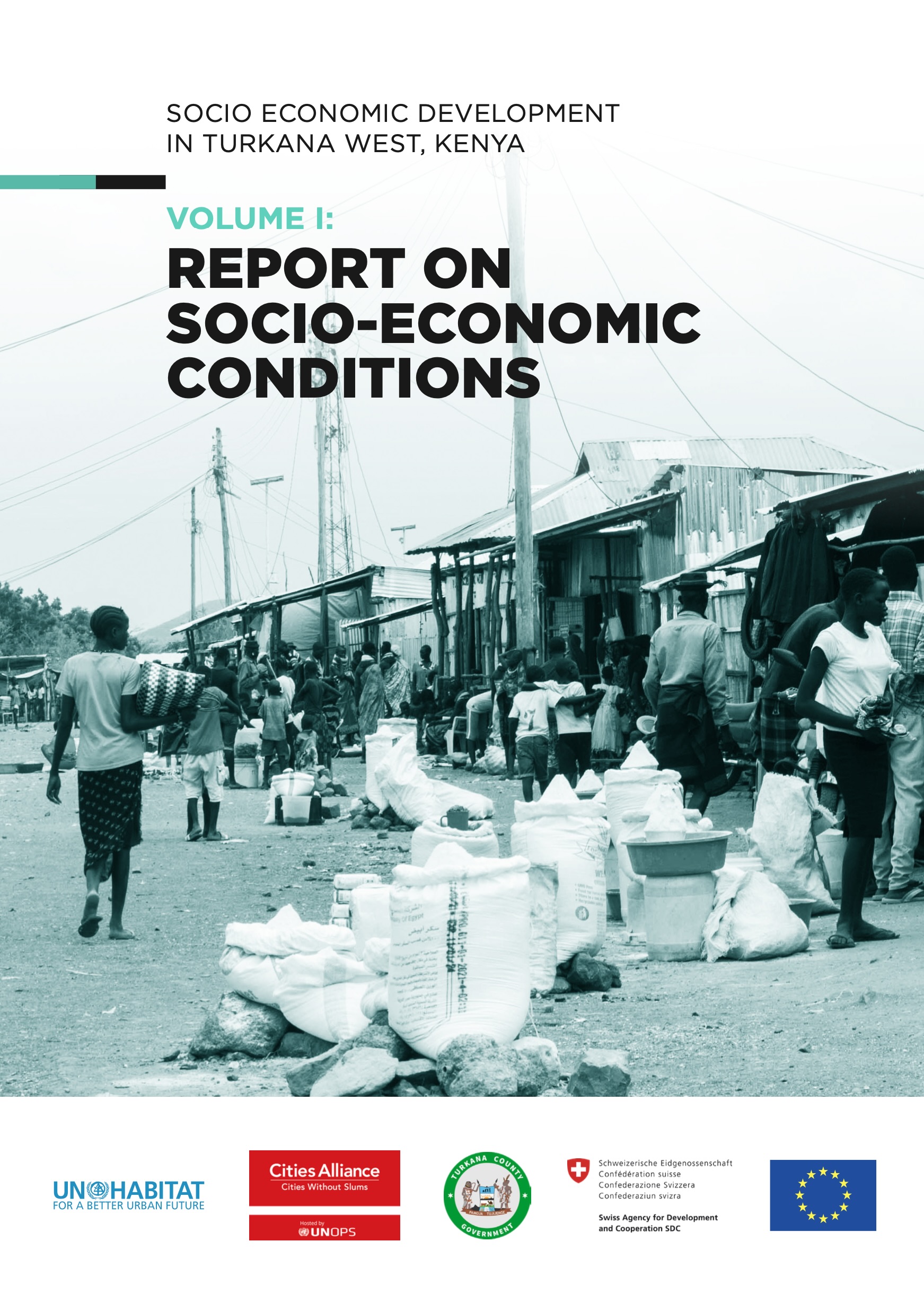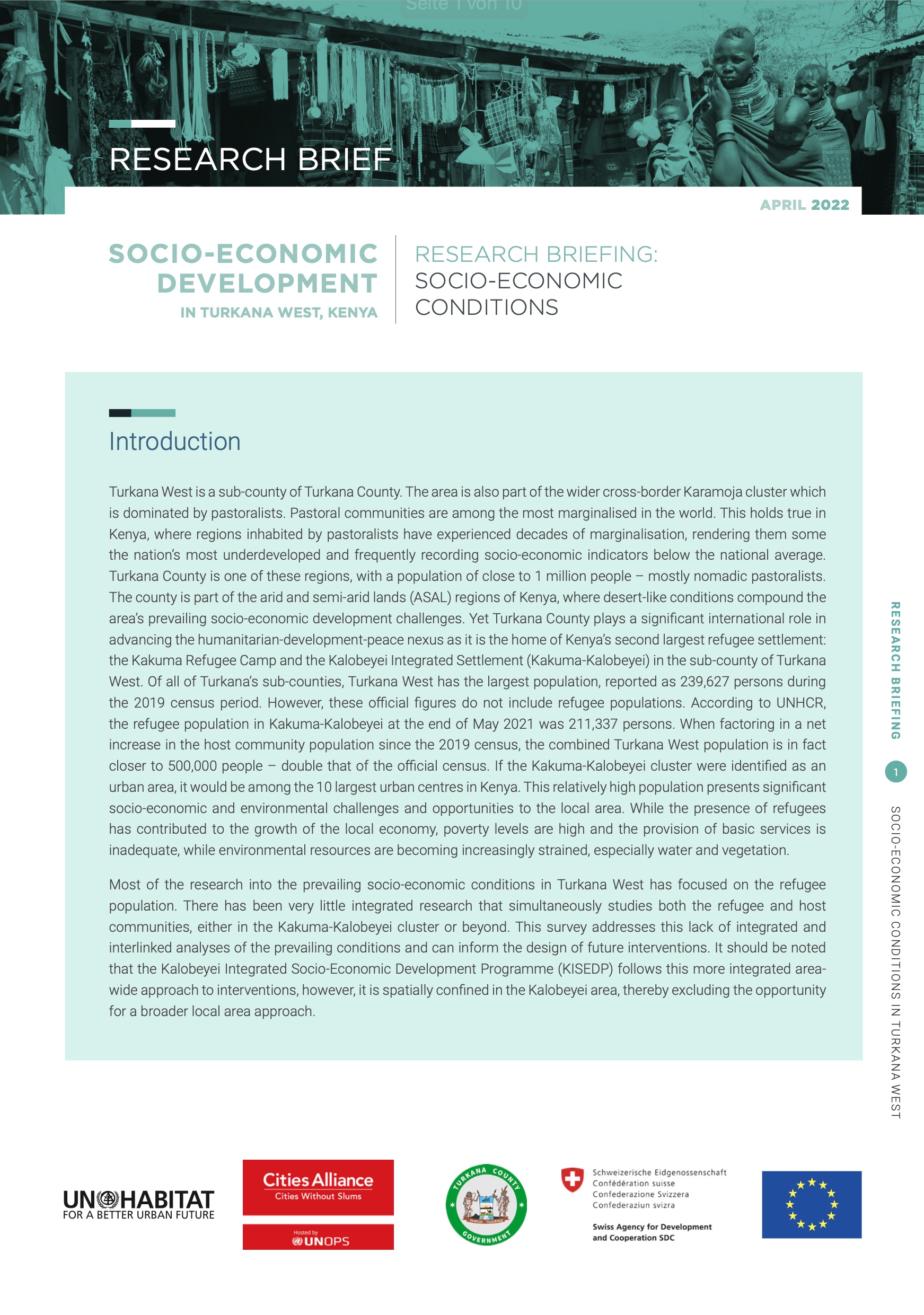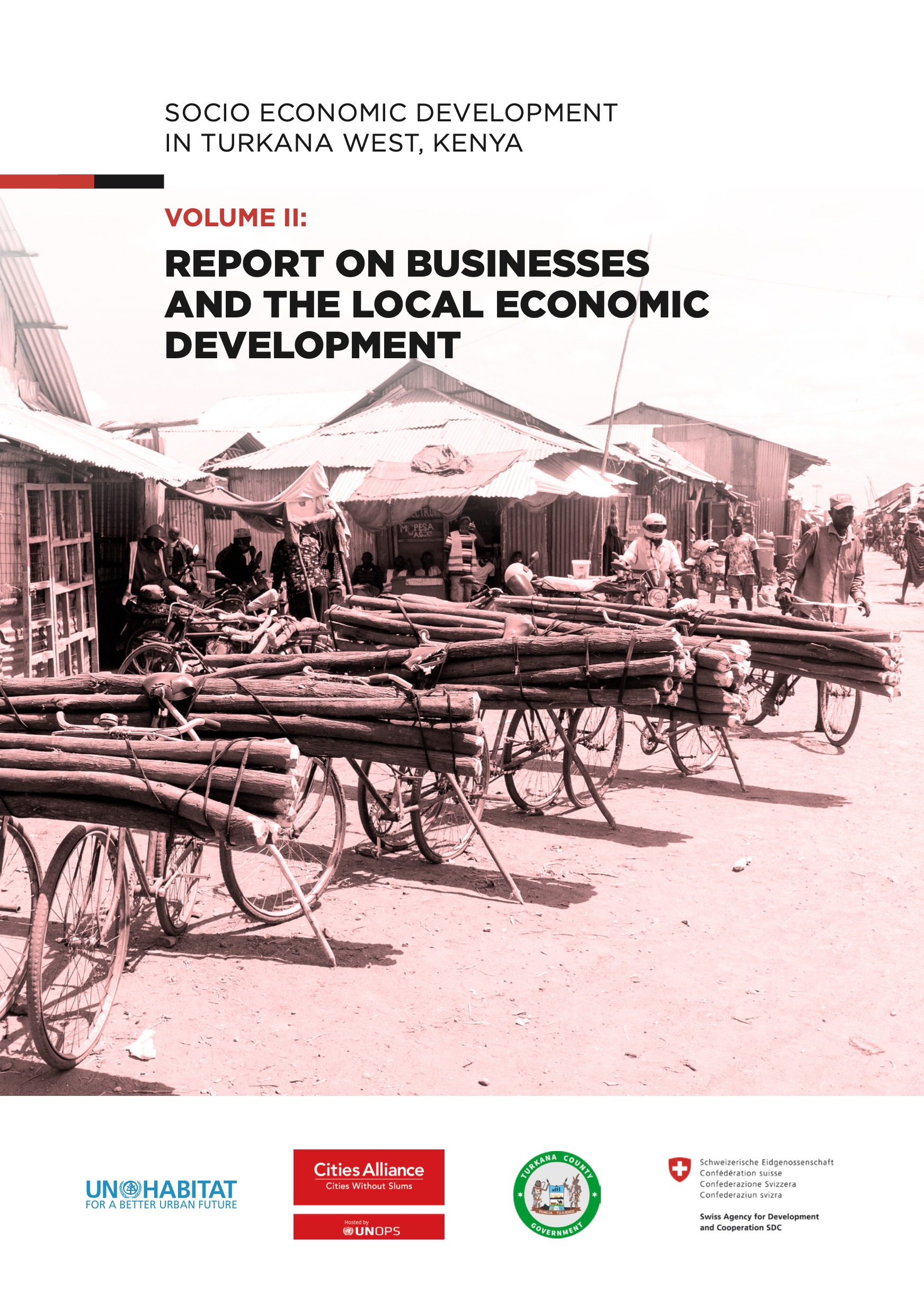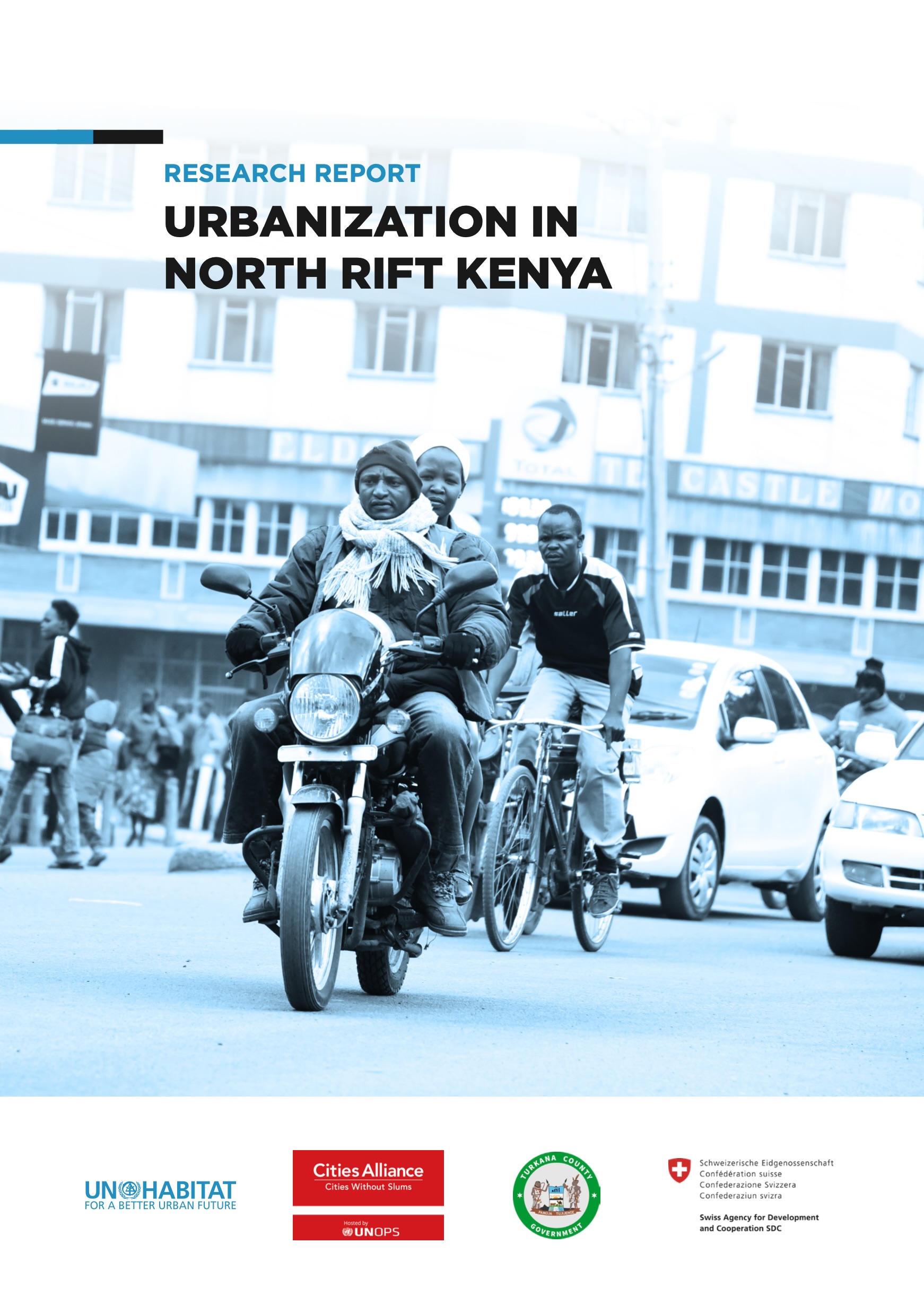- Who We Are
- How We Work
- Regional / Country Initiatives
- Legacy
- Core Themes
- Working Groups
- Portfolio & Results
- Newsroom
- Resources
Kenya: Turkana West Socio-Economic Conditions


This publication is part of the series The Socio-Economic Development in Turkana West, Kenya. Volume I: Report on Households Socio-Economic Conditions.
This research paper was designed to produce crucial data about Turkana West's households (both refugee and host community), beyond the spatial boundaries of the Kakuma-Kalobeyei cluster. It was undertaken between September and November 2020, targeting the main centres in Turkana West and employing both qualitative and quantitative methods.
The report provides important data and information for deepening the understanding of the prevailing socio-economic conditions in Turkana West and aims to contribute to the design of better-informed interventions for the area‘s humanitarian- development programming.
Turkana West is a sub-county of Turkana County, with a population of close to 1 million people – mostly nomadic pastoralists. The county is part of the arid and semi-arid lands regions of Kenya, where desert-like conditions compound the area’s prevailing socio-economic development challenges.

Yet Turkana County plays a significant international role in advancing the humanitarian-development- peace nexus as it is the home of Kenya’s second largest refugee settlement: the Kakuma Refugee Camp and the Kalobeyei Integrated Settlement (Kakuma-Kalobeyei).
While the presence of refugees has contributed to the growth of the local economy, poverty levels are high and the provision of basic services is inadequate, while environmental resources are becoming increasingly strained, especially water and vegetation.
The research has demonstrated multiple socio-economic challenges as prevalent in Turkana West, with indicators that are largely below the national average in most of the indicators analysed. It is also evident that while these challenges are prevalent among the refugees and host communities, the degree of their severity varies between the groups.
This demands interventions at the strategic level such as addressing the prevalent water scarcity, poorly developed local infrastructure and inadequate basic services, low education and literacy levels, low incomes, poverty and marginalization, and addressing a local economy that is over-reliant on humanitarian financial streams.


